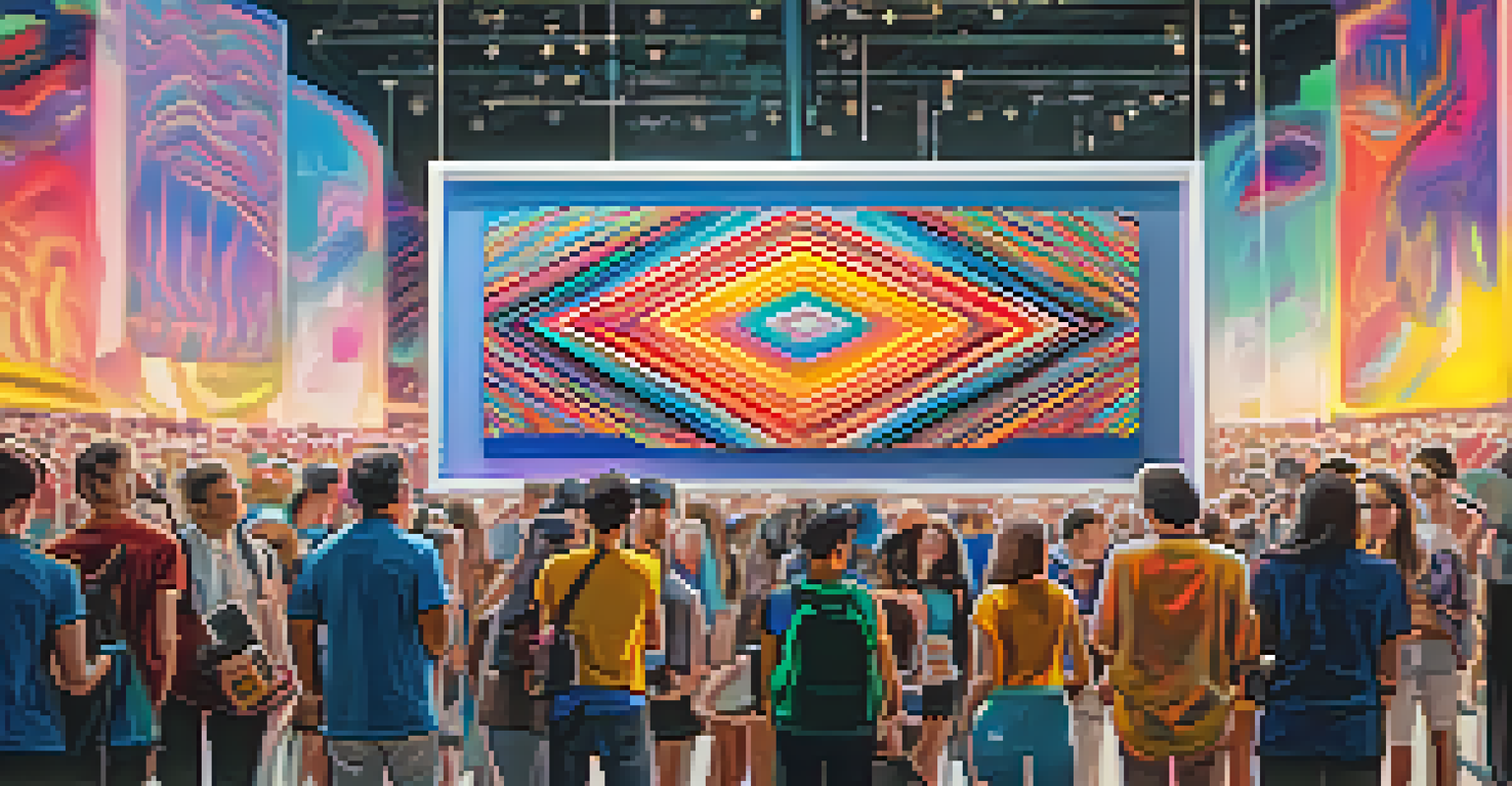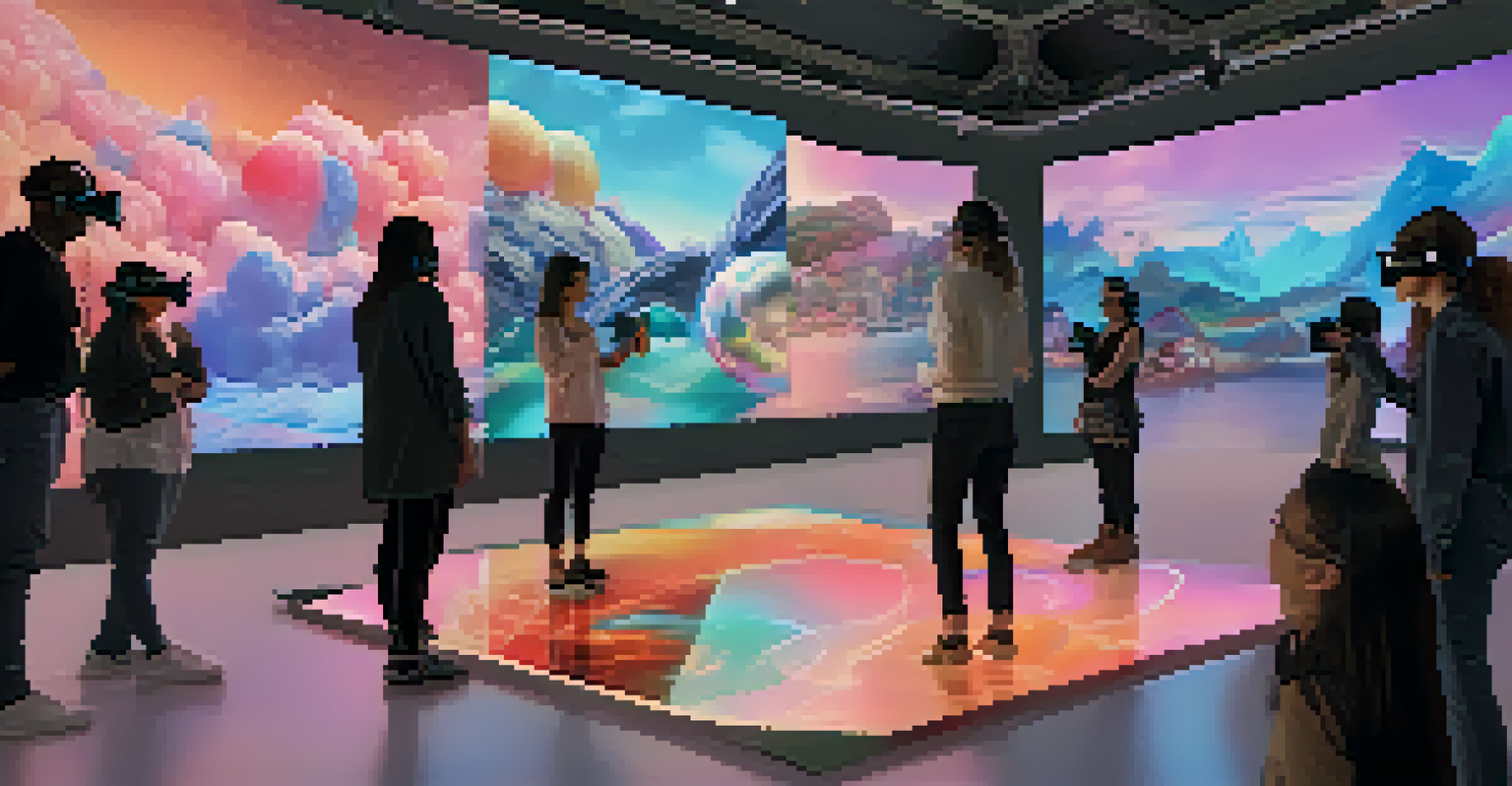Exploring Consumer Behavior with NFT Personalization

Understanding NFTs: The Basics of Non-Fungible Tokens
Non-fungible tokens, or NFTs, are unique digital assets that represent ownership of a specific item or piece of content. Unlike cryptocurrencies like Bitcoin, which are interchangeable, each NFT has distinct information that makes it one-of-a-kind. This uniqueness is what attracts consumers, as owning an NFT can signify exclusivity and status in the digital realm.
NFTs are not just digital assets; they represent ownership and exclusivity in the digital realm.
NFTs can encompass a wide variety of digital items, including art, music, virtual real estate, and even tweets. This diversity allows consumers to express their interests and personalities through their NFT collections. As more people engage with NFTs, understanding their appeal becomes essential for marketers looking to tap into this evolving market.
The rise of NFTs has created a new landscape for digital ownership, shifting consumer expectations about value and authenticity. As we explore how NFT personalization affects consumer behavior, it's crucial to keep in mind the foundational elements that define these unique tokens.
The Role of Personalization in Consumer Engagement
Personalization is a key factor in today’s consumer experience, as it creates a sense of connection and relevance. When brands offer tailored experiences, customers are more likely to engage and make purchases. In the realm of NFTs, personalization can manifest in various ways, from customized artwork to unique metadata that reflects a buyer's identity.

For example, an artist might create a limited edition NFT that includes personalized messages or attributes for each buyer. This not only enhances the value of the NFT but also fosters a deeper relationship between the artist and the consumer. Such strategies illustrate how personalization can drive consumer behavior and loyalty in the NFT space.
NFTs Foster Personal Identity
Consumers are drawn to NFTs that reflect their personal beliefs and values, creating a deeper connection between buyers and their digital assets.
As brands continue to leverage personalization, understanding its impact on consumer engagement is vital. By creating meaningful connections, businesses can better cater to their audience and ultimately enhance their market presence.
How NFTs Reflect Consumer Identity and Values
NFTs serve as a canvas for individuals to express their identity and values in the digital age. Consumers often gravitate towards NFTs that resonate with their personal beliefs, interests, or social causes. This trend has led to a growing demand for NFTs that not only entertain but also align with the buyer's worldview.
Personalization is the key to consumer engagement, especially in the evolving landscape of NFTs.
For instance, environmentally-themed NFTs that support conservation efforts attract consumers who prioritize sustainability. By purchasing such NFTs, individuals can showcase their values while participating in the digital economy. This alignment of values and consumer behavior is a powerful driver for marketers aiming to create relevant NFT offerings.
Ultimately, the way consumers select NFTs based on identity and values underscores the importance of understanding these motivations. Brands that tap into these sentiments can forge stronger connections with their audience.
The Influence of Community in the NFT Space
Community plays a critical role in shaping consumer behavior within the NFT ecosystem. Many buyers are motivated by the desire to belong to a group or support a particular artist or project. This sense of community can create a buzz around certain NFTs, driving demand and sales.
For example, NFT projects often build dedicated communities on social media platforms, where members can share their collections and experiences. These communities foster a sense of camaraderie and encourage consumer loyalty. As people feel connected to a group, they are more likely to invest in NFTs that their peers support.
Community Drives NFT Engagement
The sense of belonging to a community motivates consumers to invest in NFTs, enhancing loyalty and driving demand for certain projects.
Recognizing the power of community can help brands strategize their marketing efforts. By cultivating a sense of belonging among consumers, businesses can enhance their NFT offerings and drive engagement.
The Impact of Scarcity and Exclusivity on Consumer Decisions
Scarcity and exclusivity are potent motivators in the consumer decision-making process. In the NFT world, limited editions and exclusive drops create a sense of urgency that encourages buyers to act quickly. This phenomenon taps into the fear of missing out (FOMO), prompting consumers to purchase NFTs they perceive as rare.
For example, an artist might release a limited number of NFTs during a virtual event, generating excitement and urgency among fans. As buyers scramble to secure their piece of the collection, the perceived value of the NFTs increases. This dynamic illustrates how scarcity can significantly influence consumer behavior in the digital marketplace.
Understanding the psychology behind scarcity can help brands craft effective marketing strategies. By creating limited-time offers or exclusive releases, businesses can drive interest and sales in their NFT collections.
Leveraging Data Analytics to Understand Consumer Preferences
Data analytics plays a pivotal role in understanding consumer behavior within the NFT landscape. By analyzing purchase patterns, preferences, and engagement metrics, brands can gain valuable insights into what drives consumer decisions. This information can then be used to tailor NFT offerings that resonate with the target audience.
For instance, data might reveal that consumers show a preference for specific types of NFTs, such as digital art over virtual real estate. Armed with this knowledge, brands can adjust their marketing strategies and create products that better meet consumer demands. This data-driven approach enhances the chances of success in a rapidly evolving market.
Scarcity Spurs Urgency in Purchases
Limited editions and exclusive drops in the NFT market create a fear of missing out (FOMO), compelling consumers to act quickly on purchases.
Ultimately, leveraging data analytics allows brands to stay ahead of the curve and respond effectively to changing consumer preferences. By using insights to inform their strategies, businesses can enhance their NFT offerings and engagement.
Future Trends: The Evolution of NFTs and Consumer Behavior
As the NFT space continues to evolve, so too will consumer behavior and preferences. Emerging technologies, such as augmented reality (AR) and virtual reality (VR), are set to enhance the NFT experience, creating immersive environments for users. This evolution could lead to new ways for consumers to interact with and personalize their NFTs.
For example, imagine a virtual gallery where users can showcase their NFT collections in a 3D space, allowing for deeper engagement and social interaction. As these technologies become more mainstream, they will likely influence how consumers perceive value and ownership in the digital realm.

By staying attuned to these trends, brands can adapt their strategies to meet the changing needs of consumers. Embracing innovation will be crucial for businesses looking to thrive in the rapidly expanding NFT marketplace.